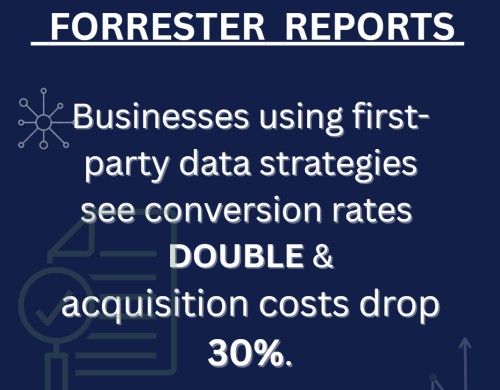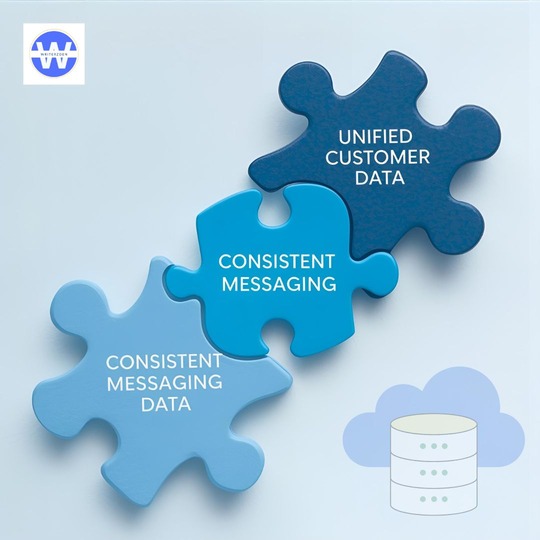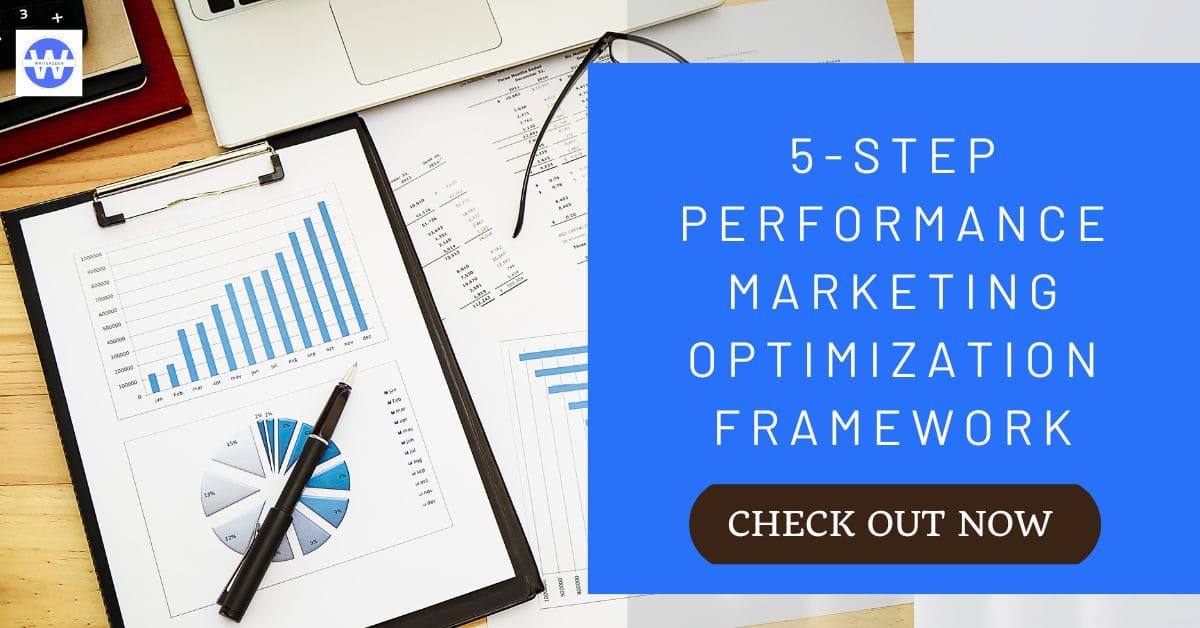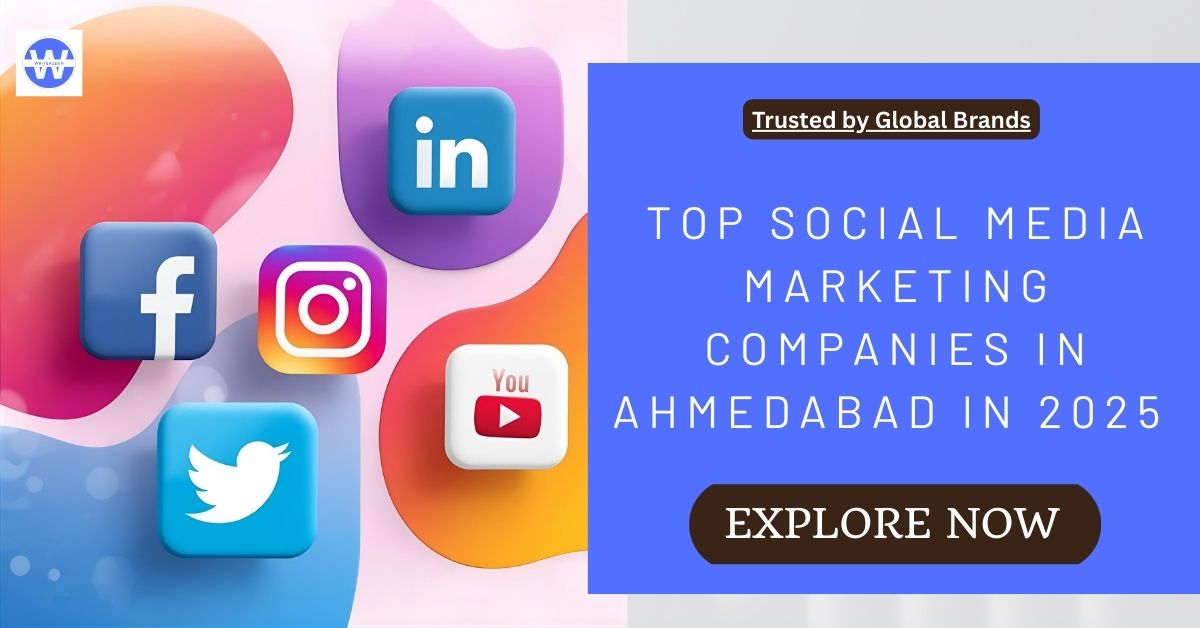Quick Summary: Stop wasting ad spend on broken performance marketing. This guide shows you how to fix attribution problems, optimize multi-channel campaigns, and activate first-party data correctly. Follow the 5-step framework that cuts customer acquisition costs by 83% and drives measurable ROI in 2025.
82% of marketers don’t trust their attribution data. Not a measurement problem—a strategy problem.
Research in the Journal of Marketing Analytics shows channel silos overestimate performance by 23-31%. Mid-market brands get hit hardest. They face enterprise complexity with startup budgets.
The Real Problem: You’re Targeting Too Late
Forrester found most B2B companies target buyers too late. By the time you’re retargeting someone, competitors already shaped their preference months ago. You’re fighting for scraps.
Everyone chases bottom-funnel conversions. Smart brands build demand early. The difference? One group pays premium CPAs. The other sets pricing. Here’s what actually separates winners from wasters: they optimize for lifetime value, not clicks.
Forrester Consulting’s 2024 research shows that first-party behavioral data cuts customer acquisition costs by 83%. Yet most companies still bid on the same third-party audiences as everyone else. Result? Rising cost per acquisition with flat conversions.
Retargeting abandoned carts sounds smart. Understanding why they abandon in the first place? That takes you to a workable performance marketing strategy, to begin with. Programmatic buying works when you pair it with predictive analytics that forecast which segments convert three months out.
This problem hits harder when you outsource to agencies. Most performance marketing services optimize within their contracted scope—paid search, social media marketing, and email.
They can’t see how channels interact. Attribution breaks. Budget decisions become guesswork.
Why First-Party Data Won’t Save You (By Itself)
Everyone collects data for a perfect performance marketing plan. Few use it correctly.

But there’s a catch.
Most brands just sort data into generic segments. That’s not targeting. That’s filing.
Companies seeing real results layer predictive analytics on first-party data. They spot high-value segments before they convert. This means connecting CRM to ad platforms, then running continuous tests.
Think about purchase intent:
- Someone views your pricing page three times in one week
- Another person views it once over three weeks
Standard retargeting treats them identically. Advanced performance marketing strategy segments by intent velocity, device patterns, and engagement depth.
Mid-market companies benefit from working with a digital marketing company in India that understands marketing attribution deeply. The best partners don’t just run campaigns. They build feedback loops connecting ad spend to revenue, then adjust targeting based on what actually closes deals.
The Multi-Channel Attribution Problem Nobody Fixes
Forbes says data-driven marketing increases ROI by 5-8 times. Yet brands still run channels separately.
Paid search doesn’t talk to social. Email ignores paid media. Customers see chaos. Marketing sees inflated numbers.
The fix isn’t another dashboard. It’s alignment.
Successful multi-channel marketing needs three things:
- Unified customer data
- Consistent messaging
- Attribution that accounts for overlap
Without all three? You’re playing a credit-claiming game instead of driving outcomes.

Real scenario: Customer sees a social ad. Clicks paid search. Gets an email. Converts through organic.
Which channel gets credit?
- Last-click says organic
- First-click says social
- Reality says all of them worked together
Channel silos lead to 31% ROI overestimation because teams measure in isolation.
The best social media marketing agencies in Ahmedabad understand this. They don’t optimize within channels. They coordinate across search, email, and content so every touchpoint reinforces the same message.
What Advanced Paid Media Actually Looks Like in 2025
Most paid campaigns still use 2019 tactics. Static ads. Broad targeting. Manual bids. A smarter alternative today is emotion-led micro campaigns that focus on niche audiences with personalized storytelling.
These work small. They break at scale.
Advanced paid media in 2025 uses:
- Dynamic creative optimization
- Predictive audience modeling
- Automated bids tied to business metrics
Brands testing 50+ creative variations beat those running 5 static ads by margins worth the complexity.
But here’s the trap: automation without direction.
Facebook maximizes conversions. Google drives clicks. Neither cares if those conversions have negative lifetime value or if clicks come from bots. Good performance marketing services optimize for revenue, not platform metrics. They build constraints into automation—minimum order values, geo restrictions, device filters. Quality matches quantity.
Agencies specializing in digital marketing in Ahmedabad or other high-growth markets face this daily. Competition drives up bids fast. Winning isn’t outspending competitors. It’s finding ignored segments and converting them better.
A 5-Step Performance Marketing Framework That Actually Drives Results
Step 1: Audit Your Data Infrastructure
Most brands collect enough data. They don’t organize it.
Centralize everything in a CRM or CDP. Connect ad platforms so targeting updates when behavior changes. Tag campaigns with UTM parameters.
Without clean data, everything downstream breaks.
Step 2: Build Predictive Segments Based on Behavior
Use conversion history to spot patterns. Look for:
- Time on site
- Pages per session
- Email engagement
- Product views
Score leads by conversion probability. Fund high-intent segments aggressively. Nurture low-intent ones.
Step 3: Test Creatively and Systematically
Run structured A/B tests. Change one variable at a time. Measure significance before calling winners.
Winners test 10+ concepts monthly. Losers run the same ad for 90 days.
Step 4: Optimize Across Channels, Not Within Them
Map customer journeys. Find drop-off points.
Fund channels that move prospects forward, not just those claiming conversions. If paid search drives brand awareness but social drives purchases, fund both.
Step 5: Tie Everything to Revenue, Not Vanity Metrics
Track to closed deals, not form fills. Use marketing analytics platforms connecting spend to customer lifetime value.
Measure profit contribution, not lead volume. This forces quality over quantity.
This framework works because it fixes root causes—bad data, weak targeting, channel silos—not symptoms like low CTRs.
What Still Goes Wrong (And How to Prevent It)
Strong campaigns face risks. Automation creates blind spots when algorithms chase wrong goals.
Predictive models trained on old data fail when markets shift. Multi-channel attribution gets messy with privacy regulations.
Bigger risk? Vendor dependency.
Companies hiring agencies for their performance marketing often can’t evaluate quality themselves. Agencies show good-looking metrics—impressions, clicks, engagement—that don’t connect to revenue.
Fix this by:
- Keeping in-house analytics capability
- Requiring agencies to report business metrics (revenue, CAC, LTV) not platform metrics
- Auditing predictive models regularly
- Diversifying paid channels so one algorithm change doesn’t tank everything
The Bottom Line on Performance Marketing
Performance marketing in 2025 needs more than tactics. It demands customer data integration, multi-channel coordination, and optimization tied to business outcomes.
First-party behavioral data improves ROI 72%, but only with correct activation.
Whether you’re evaluating a paid advertising strategy, running social media campaigns, or working with partners who specialize in paid media optimization and marketing analytics, top digital marketing agencies in Ahmedabad like WriterzDen can help ensure your efforts drive meaningful results.
Winning agencies:
• Build attribution models
• Optimize for conversion optimization and customer lifetime value
• Transfer knowledge so you need them less over time
What’s your take on performance marketing? Drop your perspective below.
Partner With WriterzDen for Performance Marketing That Delivers
WriterzDen is a digital marketing agency in Ahmedabad specializing in performance marketing services that connect strategy to revenue. We don’t just run campaigns—we build frameworks that fix attribution problems, optimize multi-channel performance, and turn first-party data into a competitive advantage.
Our approach combines data-driven marketing with compelling content strategy. Whether you need paid media optimization, conversion-focused landing pages, or end-to-end performance marketing services, we focus on metrics that matter: customer acquisition cost, lifetime value, and profit contribution.
We’ve helped B2B and mid-market brands cut acquisition costs while scaling revenue through ROI-focused campaigns that integrate seamlessly across search, social, and email. If you’re tired of agencies that report on clicks instead of conversions, let’s talk about building a performance marketing strategy that actually works.
FAQs
Performance marketing is advertising where you pay based on measurable results—clicks, conversions, sales—not impressions. Unlike traditional marketing where you pay upfront regardless of outcomes, performance marketing ties spend directly to actions.
It works through channels like paid search, social ads, affiliate marketing, and programmatic display. You set specific goals (lead generation, purchases, sign-ups), track user behavior through pixels and tags, then optimize campaigns based on which audiences and creatives drive conversions. The key is continuous testing and real-time adjustment based on data.
Digital marketing is the umbrella. Performance marketing is a subset focused specifically on measurable, results-driven campaigns.
Digital marketing includes brand awareness efforts, content marketing, SEO, and social media engagement—activities that build long-term value but don’t always tie to immediate conversions. Performance marketing focuses exclusively on trackable actions with clear ROI attribution.
Think of it this way: A brand awareness video campaign is digital marketing. A retargeting ad that drives cart completions is performance marketing. Many successful strategies use both—digital marketing builds demand, performance marketing captures it.
Start by tracking beyond platform metrics. Don’t just measure clicks or impressions—connect campaigns to revenue.
Set up conversion tracking that follows users from first click to final purchase. Use UTM parameters on every link so you know which channel, campaign, and creative drove each conversion. Integrate your CRM with ad platforms to track customer lifetime value, not just initial purchase.
Calculate ROI using this formula: (Revenue from campaign – Campaign cost) / Campaign cost × 100. But go deeper—measure customer acquisition cost (CAC), return on ad spend (ROAS), and payback period. The best marketers optimize for profit contribution, not vanity metrics like impressions or engagement rates.
It depends on your audience and goals, but here are the channels driving strongest results:
Paid search (Google Ads) works for high-intent buyers actively searching for solutions. Paid social (Meta, LinkedIn) excels at targeting specific demographics and interests. Programmatic display scales reach while retargeting warm audiences. Affiliate marketing brings partners who only get paid on conversions.
The mistake brands make? Treating channels separately. The best performance comes from multi-channel campaigns where paid search drives awareness, social retargets engaged users, and email nurtures them to conversion. Test channels individually first, then layer them based on customer journey data.
Four common reasons:
Audience saturation—you’ve exhausted your best segments and now target broader, lower-intent audiences.
Increased competition—more advertisers bidding on the same keywords or audiences drives up costs.
Ad fatigue—your creative has been seen too many times and performance drops.
Poor attribution—you’re not tracking the full customer journey, so you over-invest in channels that look good but don’t actually drive conversions.
Fix it by refreshing creative regularly, expanding into new audience segments using predictive analytics, improving landing page conversion rates, and auditing your attribution model to understand which touchpoints actually contribute to sales.




